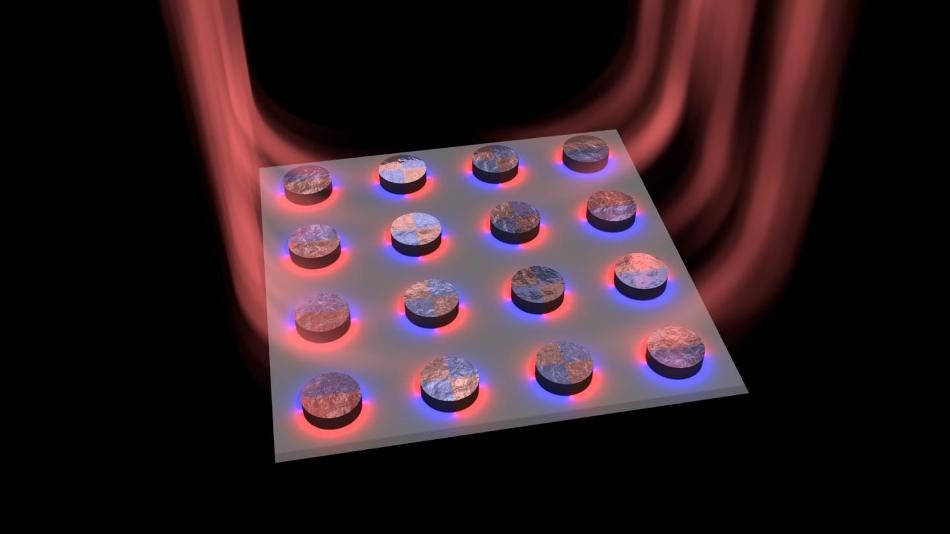Jan 4 2017
 The researchers at Aalto University have made an array of nanoparticles combined with dye molecules to act as a tiny laser. The lasing occurs in a dark mode and the laser light leaks out from the edges of array. (CREDIT - Antti Paraoanu)
The researchers at Aalto University have made an array of nanoparticles combined with dye molecules to act as a tiny laser. The lasing occurs in a dark mode and the laser light leaks out from the edges of array. (CREDIT - Antti Paraoanu)
A team of researchers from Aalto University have developed a plasmonic nanolaser that can function at visible light frequencies and can make use of “dark lattice modes”.
The laser functions at length scales that are 1000 times smaller in comparison with the thickness of a human hair. Light captured in such small dimensions has extremely short lifetimes, so the light wave only has time to wiggle up and down a few tens or hundreds of times.
The research findings create new prospects for on-chip coherent light sources, such as very small and ultrafast lasers.
In this research, the laser operation is based on silver nanoparticles arranged in a periodic array. In conventional lasers, the feedback of the lasing signal is provided by regular mirrors, whereas the new nanolaser uses radiative coupling between silver nanoparticles.
These 100-nm-sized particles serve as miniature antennas. To generate high intensity laser light, the interparticle distance was made equivalent with the lasing wavelength so that all particles of the array emit simultaneously. The researchers used organic fluorescent molecules to provide the input energy (the gain) that is required for lasing.
Light from the Dark
A big challenge in accomplishing lasing in this manner was that light might not exist long enough in such small dimensions to be helpful. However, the team found a solution to this potential issue by producing lasing in dark modes.
A dark mode can be intuitively understood by considering regular antennas: A single antenna, when driven by a current, radiates strongly, whereas two antennas - if driven by opposite currents and positioned very close to each other -- radiate very little. A dark mode in a nanoparticle array induces similar opposite-phase currents in each nanoparticle, but now with visible light frequencies.
Päivi Törmä, Professor, Aalto University
“Dark modes are attractive for applications where low power consumption is needed. But without any tricks, dark mode lasing would be quite useless because the light is essentially trapped at the nanoparticle array and cannot leave”, adds staff scientist Tommi Hakala.
“But by utilizing the small size of the array, we found an escape route for the light. Towards the edges of the array, the nanoparticles start to behave more and more like regular antennas that radiate to the outer world”, tells Ph.D. student Heikki Rekola.
The research team made use of the nanofabrication facilities and cleanrooms of the national OtaNano research infrastructure. The research findings have been published in the Nature Communications journal.
Researchers create a tiny laser using nanoparticles - Aalto University Research
Aalto University/Youtube.com